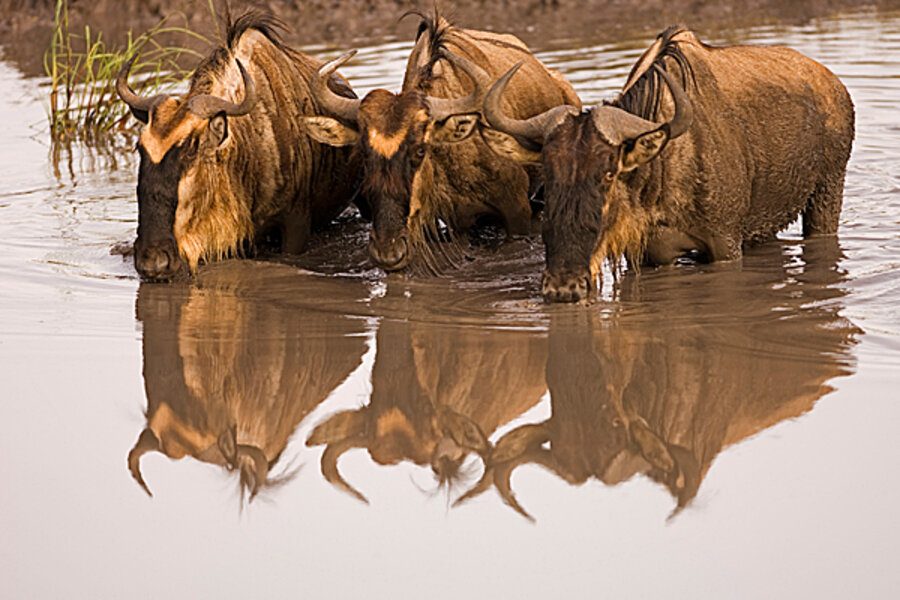What the wildebeest migration taught me about self-improvement
Loading...
There's this wildebeest running across the wall in our living room. As we slump on the couch, our projector lights the room with a TV nature program on the far wall. Our first Thanksgiving in our new house has left us flattened. Tonight: gratitude and vegging out. Tomorrow: the next round of dishes, work, life.
The animal stumbles across the plains with her mother, growing lanky on the sweet seasonal grasses. This little wildebeest has had several breathtaking adventures: She swam with toothy crocodiles, crossed a roaring river on her spindly young legs, and outsmarted three hungry cheetahs. Her herd keeps moving, never stopping to pause. Their brown bodies just cycle over and over again across the open plains. Just as I think they're approaching their destination, the narrator announces that the foal is now a year old, and the annual migration cycle begins anew. They'd never found the reason for their great trek across the continent, and here they are starting all over again.
After 28 of my own cycles on the planet, I'm beginning to be able to describe my life in habitual patterns: The summer finds her exploring rocky streams, digging in the dirt, and grazing on ice cream cones several times a week. Then, as the winter snows settle in, she dons hats and wool, carries logs in for warmth, and drives slowly through snowstorms with music blaring. Etcetera. Cycling like a wildebeest through the years.
At a friend's wedding several months ago, we stood around the bonfire at the end of the night, our breath forming billowing clouds between us as we talked. A stranger and I started a conversation and soon rocketed onto a subject no less important than our deepest life's ambitions. What did we want to do, now that we were living the dreams we'd set for ourselves? We found that our ambitions changed constantly, morphing into a new carrot to reach for as soon as our current goals were met. My new friend likened it to bees on an Indian summer afternoon, buzzing dizzily from flower to flower. We assess, gather what is needed, then move on.
The day after the wedding, the bride would face a new checklist for her life, and we'd return to ours. Back on the couch on Thanksgiving night, I analyze my own thoughts – I was so content with purchasing a home and hosting a memorable meal with family, but my brain was already straining to rush on to the next phase. I'm torn between disgust at this tendency, and pride in this instinct to never be still, to not get too comfortable. We may be like the bees, or the wildebeest, but I think it's perfectly human. We pursue the next hurdle with as much vigor as if our lives depended on it.
Our favorite scraggly beast returns to the plains on which she was born, and is barely recognizable. She's larger, confident, and trails a baby wildebeest. She pauses for a moment to snort and look out on the horizon. As I rouse myself for bed, I stop to watch as she turns back to the herd, becoming part of a giant string of animals trailing off into the distance.
"One thing is for sure," asserts the narrator, "the trick is to just keep moving."





